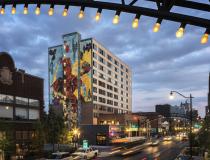To help meeting professionals better accommodate people with disabilities at meetings while saving time and reducing stress, here are some suggestions.
Collect Information During the Registration Process
Encourage Communication: Ask the person who is registering appropriate questions by capturing their information on your registration form.
Start by creating a way for people who are registering to communicate that they have a disability that could impact their experience. A simple way to ask is “What can we do to enhance your ability to fully participate in this conference? Please let us know of any accommodations that would make your experience better.”
Timely Follow-Up: Continue communication with a phone call and/or email. Learn more about what accommodations the person needs and let them know if you can provide them.
For example, does the person…
- Have a hearing loss or are deaf? Have impaired vision? What specific needs do they have?
- Need a wheelchair-accessible vehicle to transport them from the airport to the venue and off-site locations?
- Need a sign language interpreter?
- Need seating at the front of the room/near speakers?
- Need to rent a scooter?
Get more details regarding the special services they need. Reassure them that you plan to provide top-notch service to accommodate them.
The information you receive from this interview will give the planning team direction. Disseminate these findings with all the people who will be responsible for providing these accommodations.
Arrange for Accessible Transportation and Parking
People who use wheelchairs may need accessible transportation to get from the airport to the meeting as well as any off-site locations. Make arrangements with transportation companies that can provide wheelchair-accessible vans.
The parking lots at all locations where you are holding meetings need to be evaluated to ensure there are ample parking spaces for guests with disability placards. Be aware that wheelchair-accessible vans often have ramps or platform lifts that deploy from the side. Van-accessible spaces need to be appropriately identified with signage. If you realize there are not enough accessible parking places, make plans to have temporary signs made. Use them to direct your guests to additional parking spaces close to the building entrance that is reserved for them.
Dining Accommodations for People Who Use Wheelchairs
Tips to help in your dining room setup planning.
- Set dining room tables and chairs with adequate space for people in wheelchairs to navigate. When all the guests are seated, there should be a minimum 36” aisle space providing room to travel between the tables.
- Guests in wheelchairs should not be told that there is a designated table in the back of the room where they should park. Inclusion is important. Give them a choice of tables, places to park their wheelchairs, and seats for them to transfer into if they desire.
- Guests who are short-statured or in wheelchairs may have difficulty seeing empty chairs at the tables. Designate a person to help them identify a place to eat. That person can lead the guest to the identified spot at the table. Look for a seating position that does not have a table leg so there is room for the person’s legs and wheelchair to fit under the table.
- Ask the person in the wheelchair if they want the chair removed so they can stay seated in their wheelchair at the dining table. Remove the chair if requested.
- Once the person is positioned at the table ask if they have enough room. Ask if they need any help during the meal. Make adjustments to the table to provide the space that is needed.
Meeting professionals must lead with an inclusive mindset. It is important to communicate and not assume what services or special accommodations people with disabilities need.
Accommodating people with disabilities is about taking care of people and treating them with dignity and respect so they can participate equally and feel fully included. Listen to their requests and ask them for suggestions on what can be done to accommodate their needs best. Communicate with others on the planning team to inform them of changes that need to be made for these accommodations.





